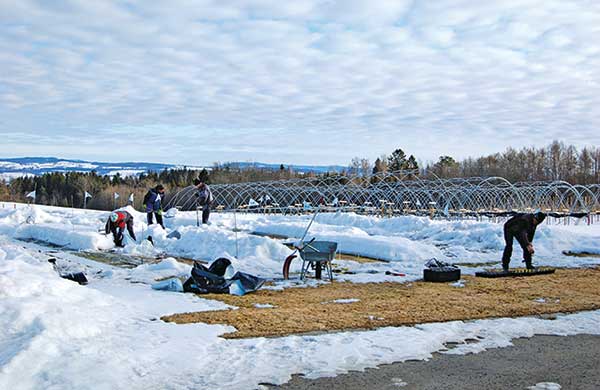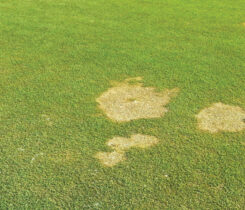Winter survival of 6 turfgrass species on putting greens

Turfgrass researchers at the Norwegian Institute for Bioeconomy Research evaluate the impact of ice encasement and two protective covers on the winter survival of six cool-season turfgrasses used on golf greens. (Photo: Wendy M. Waalen, Ph.D.)
Ice encasement is the most economically significant winter stress in Scandinavia. At the Norwegian Institute for Bioeconomy Research, we evaluated the impact of ice encasement and two protective covers on the winter survival of six cool-season turfgrasses used on golf greens.
The two covers were plastic alone and plastic over a 0.4-inch woven mat. The six turfgrasses included creeping (Agrostis stolonifera L.), velvet (A. canina L.), and colonial (A. capillaris) bentgrass; Chewings (Festuca. rubra L. ssp. commutata) and slender creeping red (F. rubra L. ssp. litoralis) fescue; and annual bluegrass (Poa annua L.).
The experiment was on a sand-based green at Apelsvoll, Norway, during 2011-2012 and 2012-2013. Turfgrass samples (3 inches in diameter, 4 inches deep) were removed from plots at the time of cover installation and throughout the winter. We recorded percent live turfgrass cover after 21 days of regrowth in a growth chamber. Results show velvet bentgrass had superior tolerance to ice encasement, surviving for 98 and 119 days during 2011-2012 and 2012-2013 winters, respectively. Ice encasement tolerance in 2012-2013 was velvet bentgrass > creeping bentgrass > Chewings fescue, slender creeping red fescue, colonial bentgrass > annual bluegrass.
Additional Information:












